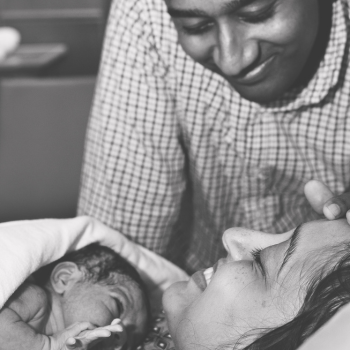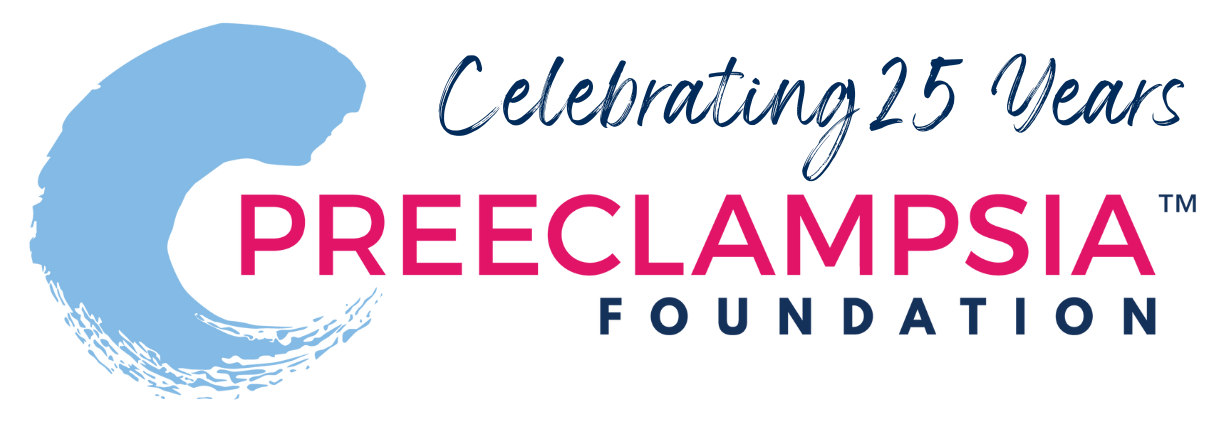1687449272.png)
VBAC After Brain Hemorrhage from Preeclampsia
June 22, 2023 By Ushma Patel

In 2013, I became pregnant with my first child. My pregnancy was typical – I experienced the usual symptoms such as morning sickness, heartburn, fatigue, headache. Every appointment, I would walk in with a list of questions for my doctor. As a public health professional, I knew I should speak up and ask questions. The doctors and nurses all said it was normal.
Around 35 weeks, I began experiencing swelling in my feet and face, headache, and a general feeling of being sick. One afternoon, I saw a Facebook post with the warning signs of preeclampsia and HELLP syndrome. I had a gut feeling that maybe this is what I was experiencing. We went to a pharmacy and checked my blood pressure. Sure enough, it was 155/99 and they immediately instructed me to call my OB. He didn’t seem overly concerned so we left the house without our hospital bag and assumed we’d be home in a couple hours. After some urine and blood tests, my doctor advised us to stay overnight for monitoring.
The next morning I was diagnosed with severe preeclampsia and partial HELLP syndrome. I was devastated. Because my platelets were dropping, we had to weigh our delivery and pain medication options and we decided to go for a C-section.
On January 30th, my daughter was born at 36 weeks, 1 day. Afterwards, I was put on magnesium sulfate to prevent seizures. I was out of it and in a lot of pain so the next 48 hours were really hard and somewhat of a blur.
During the next few days, we had doctors and nurses coming in and out at all hours. My daughter was suspected of having jaundice and the pediatricians heard a heart murmur, although they said it was normal.
On day 5, I was finally well enough to walk, shower, and take care of her myself. I was up all night with the continuous cycle of feeding and diaper changes to give my husband a break.
The next morning when the nurses came in to check her vitals, they noticed her temperature had dropped. After unsuccessful skin-to-skin, they took her to the special care nursery. The nurses also noticed my blood pressure was still very high so they demanded I rest.
At this point, my mood was spiraling downhill. I felt incredibly anxious and not like myself. I felt like my blood was burning and just knew something was wrong. I was finally given blood pressure medication. Shortly thereafter, I remember pleading to the charge nurse to come into the room and I insisted that something felt wrong. My arms began to shake, my heart was racing, I couldn’t get out of bed. Everyone thought I was having a bad reaction to the blood pressure medication. I had an “out of body” experience. The entire rapid response team was around me within minutes.
I ended up having a CT scan, and they found I suffered from a subarachnoid brain hemorrhage. I was immediately taken to the hospital’s ICU. The doctors decided that they were not equipped to handle my complex case, and suggested I get transferred to another hospital 30 miles away for care in the neurosciences ICU. A critical care team and ambulance came to get me and we all thought I would be going in for brain surgery. Unfortunately, they would not let my baby come with me.
At the 2nd hospital, I was in the ICU for a few nights and then on a recovery floor. I would pump milk and my husband would drive it to the other hospital.
The doctors determined the hemorrhage was not due to an aneurysm as suspected, but instead because of the high blood pressure. I was given several medications, and after a few
days was discharged. Two days later, my daughter was discharged from the hospital and we took her home.
Unfortunately, the journey did not end. I struggled with breastfeeding and bonding with my baby, as well as postpartum depression and PTSD from the traumatic delivery.
My daughter struggled to gain weight. We were in and out of the doctor’s office and ED, and she was diagnosed with a congenital heart defect at 4 months (that went undetected during my entire pregnancy). She had open heart surgery at 7 months and eye surgery at 15 months. After months of waiting on genetic testing results, we finally received a diagnosis
of Noonan Syndrome in 2016.
Surprisingly, we ended up having another baby. The second time was less complicated but not completely smooth. I was followed by an MFM, on baby aspirin, and with my MFM’s
support and a doula, was able to have a VBAC at 38.5 weeks without an epidural. However, I did have significant tears so they had to take me back to the OR. Two days after coming home, I had high blood pressure AGAIN. Luckily, this time we knew what to look out for. I called my MFM and was readmitted. The doctors found that I had low iron levels due to blood loss during the delivery. Although it was difficult being back in the hospital, I was able to avoid magnesium sulfate and felt much better after receiving a blood transfusion. This
time around, we took our baby with us and that helped tremendously. I feel so fortunate to have lived through another pregnancy without major complications and am now blessed to have two wonderful children.
1748547461.png)
My sister Francilia Jadine Garcia passed away on April 18,2025 after delivery two healthy twin boys, Elijah and Micah Garcia on March 20,2025...
ReadMore- My Sweet Miracle July 31, 2025
- Post Preeclampsia July 31, 2025
- Forever Jewelz July 31, 2025
- Early Detection July 31, 2025
- Postpartum Eclampsia Nearly Took My Life—now It’s Helping Me Save My Daughter’s July 31, 2025
- Listen To Your Body July 15, 2025
- I Was So Unprepared July 15, 2025
- Keeping the Faith July 05, 2025
- Why Me? From Trauma To Healing July 05, 2025
- After Birth and After Shocks July 05, 2025
